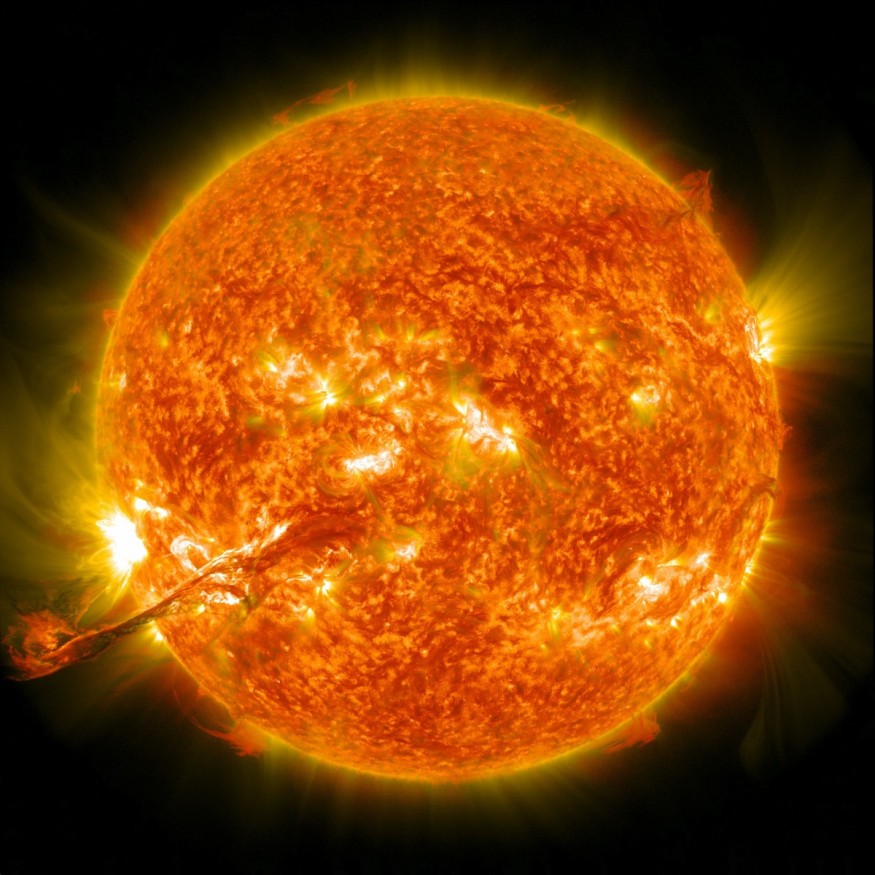A "dangerous sunspot" known as active region 3089 (AR3089) is currently facing Earth. It has the tendency to emit a major solar flare is likely to strike our planet in the coming hours and days, according to the National Oceanic and Atmospheric Administration (NOAA). A renewed solar storm could disrupt our Blue Planet's radio and satellite technologies, as well as the global positioning system (GPS).
Latest Space Weather Forecast

The NOAA's Space Weather Prediction Center (SWPC) as of Thursday evening, September 1, stated that an X flare may occur with a 5% chance within the next three days.
X-class solar flares are the strongest out of the three-tier scale used by astronomers to determine the intensity and impact of these solar storms toward Earth.
Yet, with the current angle of the dangerous sunspot directly pointing at Earth, space weather authorities and enthusiasts are reporting that a powerful solar flare and coronal mass ejection (CME) could occur at any time.
A former National Aeronautics and Space Administration (NASA) astronomer, Dr. Tony Phillips, wrote on SpaceWeather.com and questioned if the temporary quietness in the Sun is just the calm before the storm, as cited by Forbes.
Also Read: Solar Flare Outburst Possible as Planet-Sized Sunspot Faces Earth Directly and Continues to Grow
Solar Wind and Geomagnetic Storm
In addition to the potential solar flare from sunspot AR3089, there is another possibility that a separate yet connected solar storm could directly hit Earth by the end of the week.
NOAA forecasters said that a G1 (minor) to G2 (moderate) classes of geomagnetic storms from a solar wind is expected to hit Earth on Sunday, September 4, striking our planet's magnetic field, as cited by SpaceWeather.com.
The magnetic storm watch says that the gaseous material is flowing from a "large hole" in the atmosphere of the Sun. If the solar storm continues, auroras could be seen over the United States and as far as south in Idaho and New York, as well as in other parts of the Northern Hemisphere.
Sunspot AR3089
In recent days, Nature World News on Wednesday, August 31, covered the unstable and explosive activity of Sunspot AR3089.
To reiterate, astronomers said the magnetic filament grew larger and out of control, cutting through our star's atmosphere.
It generated a so-called "canyon of fire" with walls as high as 20,000 kilometers and almost five times as long.
Solar Cycle 25
The latest developments come as the Sun is currently in its Solar Cycle 25 as part of its 11-year cycle, which started in December 2019.
During a media conference in September 2020, both NASA and the NOAA discussed their analysis and predictions about the new solar cycle.
The Solar Cycle 25 Prediction Panel, an international group of experts co-sponsored by the two US agencies, announced at that time that the solar minimum occurred in December 2019, according to NASA TV.
The space weather authorities also predicted that the next solar maximum will occur in July 2025. Within this period, the Sun's solar activity is expected to increase and become more dynamic, generating above-average solar storms, as well as other space weather hazards like radio blackouts and solar radiation storms.
© 2025 NatureWorldNews.com All rights reserved. Do not reproduce without permission.





